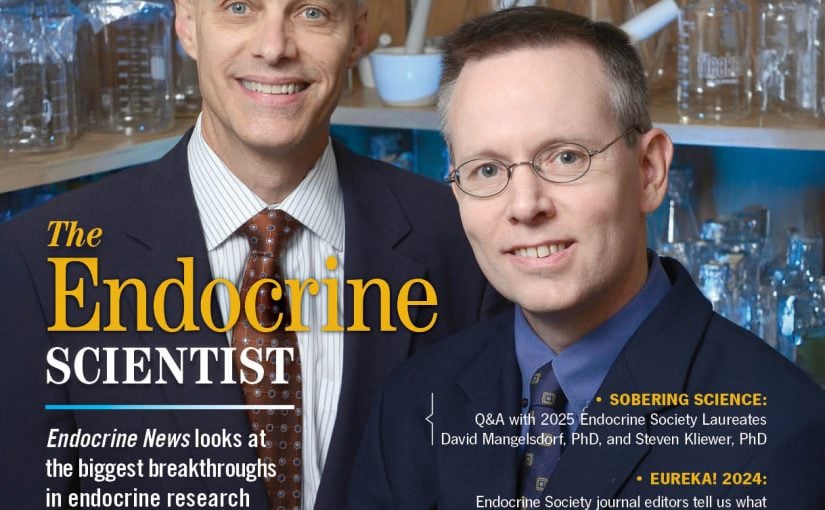In 1977, Dr. Susan Mandel, MD, MPH, of the University of Pennsylvania, lived in South Africa for several months through a high school exchange program. She could have never guessed that she would be returning to Johannesburg three and a half decades later to share her skills as one of the world’s premier thyroid experts.
Much had changed since her first trip, thanks to the end of apartheid. But despite promising social progress in South Africa, the Chris Hani Baragwanath Hospital in the Soweto area of Johannesburg still serves an enormous underprivileged population, including many advanced cases of endocrine diseases. Mandel and her trainee, Ilona Lorincz, MD, found themselves immersed in this vibrant and welcoming community of physicians and patients last April, allowing them to gain hands-on experience in an entirely different context. She described her return to Africa as “a really powerful and rewarding experience, both academically and personally.”
Crossing Borders
Mandel and Lorincz spent two weeks working and traveling in South Africa as part of Th e Endocrine Society’s inaugural Ambassador Exchange Program, which sends two American endocrinologists to an international hospital in a developing area. In January 2013, Gary Hammer, MD, PhD, and his trainee Tobias Else, MD, of the University of Michigan, went to the King Edward Memorial Hospital in Mumbai as the first ambassadors, where Nalini Shah, DM, and Shruti Khare, MBBS, MD, hosted them. Similarly, Roy Shires, MBBCh, PhD, FRCP, of Baragwanath and his trainee Kershlin Naidu, BMedSci, MBBCh, FCP, MMed, acted as guides to the endocrine community and culture of South Africa during Mandel’s April trip. She returned the favor by receiving Shires and Naidu at the University of Pennsylvania in June.
At Baragwanath Hospital, Mandel conducted special seminars with the radiology and surgery groups. Her surgery seminar was attended by almost 100 practitioners, and the hospital organized a three-hour session for radiologists where she gave an introductory lecture on thyroid ultrasound and then demonstrated on 15 patient volunteers with different thyroid or parathyroid issues. “Everybody was so open to our visit and so engaged with us,” she said. “We never felt like we were observers.” Mandel’s visit also included participation in the annual Society for Endocrinology, Metabolism, and Diabetes of South Africa (SEMSDA) meeting where she presented a plenary lecture and a “meet the professor” session.
The experience extended beyond the endocrinology ward as well. The doctors met practitioners from the entire department of medicine, including the chief of medicine, and visited a rural diabetes clinic. Mandel was struck by the scale of physical exams performed by the South African physicians they encountered during the trip. “What’s happened in the U.S. is that we rely more and more on technology for diagnosis and less on our physical examination skills,” she explained. Although technological resources are invaluable, so is a physician’s ability to diagnose and treat by listening to and examining a patient. This is an integral part of medical training in South Africa and other parts of the world, and Mandel believes it would be a worthwhile effort to incorporate more of such education into American programs.
She went on to describe the extraordinary quality and compassion of the physicians she met, but lamented the difference in resources. Due to the poverty in the areas surrounding Baragwanath, many patients come in with advanced stage diseases that are rarer in U.S. hospitals. Mandel saw numerous unusual cases, such as children with precocious puberty that began at age 2 but was not caught until age 8. The most interesting case, as described by Lorincz, was of a young, pregnant woman with a large pheochromocytoma encasing her celiac trunk. She had previously terminated a pregnancy, but elected to try for a child the second time. They saw her on several occasions over the course of their time in Johannesburg, and later heard from Naidu that she successfully delivered a 5.5 lb .baby girl. The patient was able to have 90% of the pheochromocytoma resected after her C-section.
When Shires and Naidu arrived at the University of Pennsylvania, they also had a full itinerary. In addition to participating in ENDO 2013, they attended clinics with endocrine attendings and joined the inpatient endocrine and diabetes teams on rounds during general medicine service. Other days were dedicated to teaching sessions like the diabetes conference and thyroid case conference. Both Naidu and Shires gave lectures to the division and worked as the guest attendings for a resident report on calcium cases. On the social side, they had dinners with colleagues, went to a baseball game, and explored the Barnes Museum.
The delegates from both countries felt that the exchange brought incredible value. Each institution has already taken steps to incorporate lessons learned from their respective trips. Mandel was so impressed with the overall experience that she is considering a sabbatical to South Africa in the near future. She claims that the The Endocrine Society’s Ambassador Exchange Program “exceeded all expectations” and sincerely hopes that it becomes a permanent fixture. Shires says that Baragwanath would love the opportunity to host more endocrine ambassadors as well. www.endocrine.org/advocacy/legislative/letters.
—Mapes is a freelance writer based in Washington, D.C.

